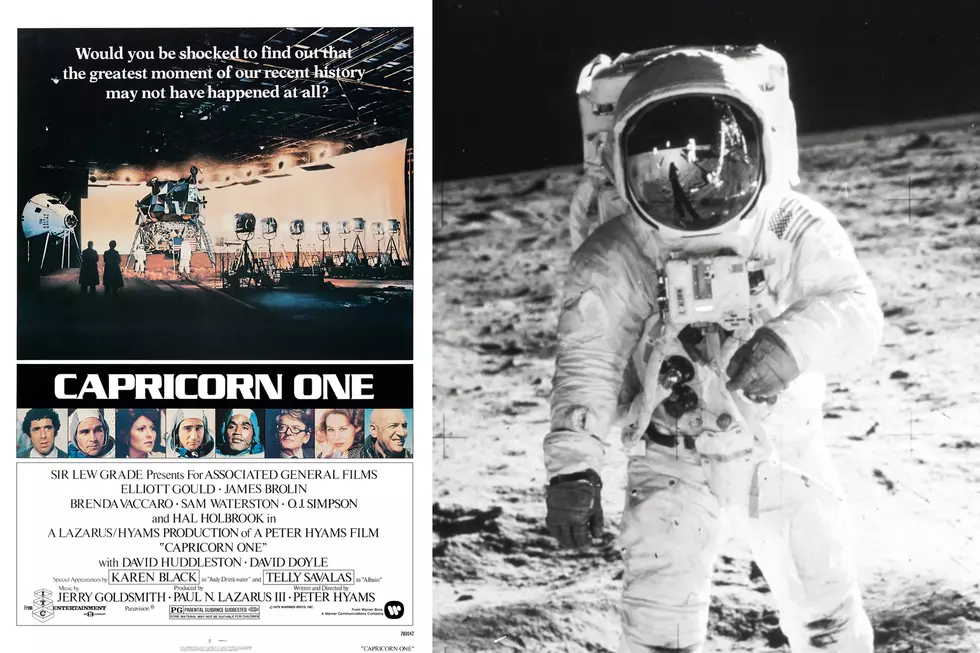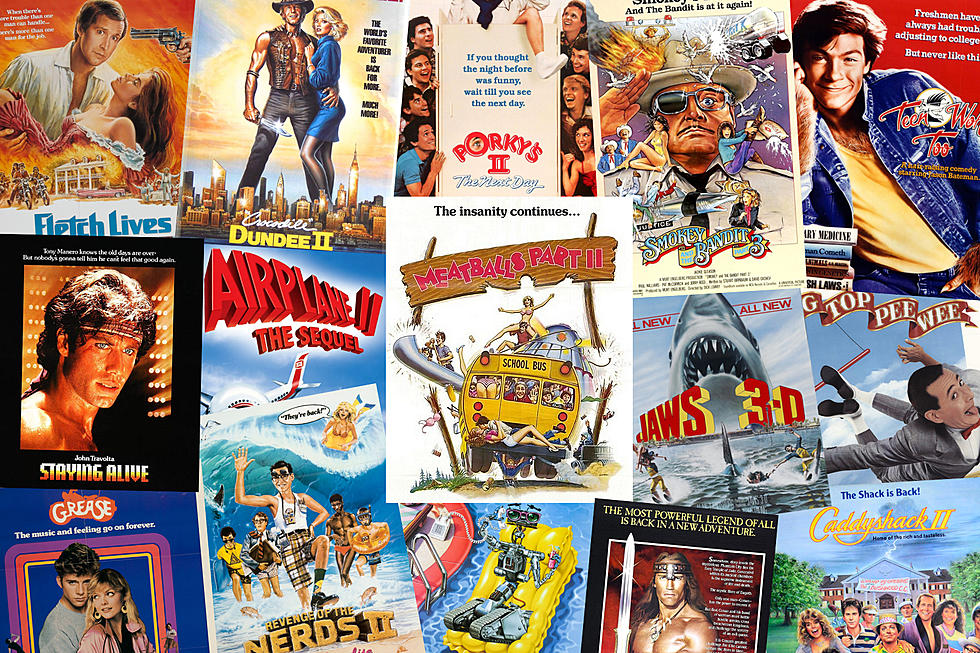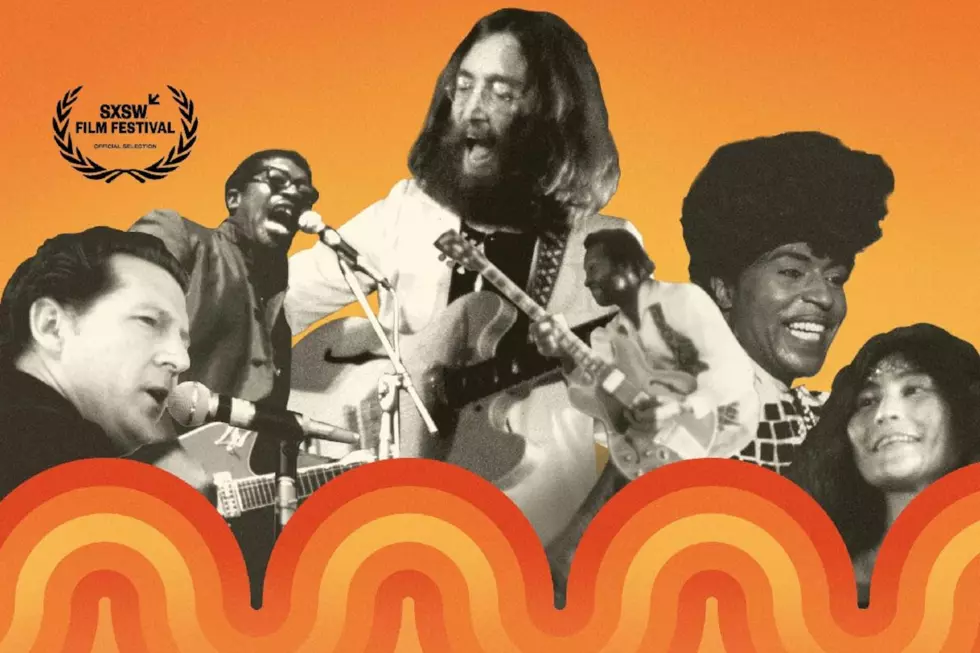
How ‘Capricorn One”s Conspiracy Theories Angered Buzz Aldrin
There will always be people who believe the NASA Moon landings were faked. Many feel that the conspiracy theory was fueled by recent events, including the Vietnam War and notably the Watergate scandal, which took place in a culture where people were beginning to loudly question the motives of their leaders. The greatest achievement of the conspiracy movement has been to raise the question: Regardless of whether they did or didn’t fake something, did they try?
Such thoughts were on writer and director Peter Hyams’ mind as he watched TV coverage of Apollo 11’s historic lunar landing in 1969, just months before President Kennedy’s deadline of reaching the Moon before the end of the ‘70s.
He explained in 2016 that his parents were born into a generation “who believed that if you read it in a newspaper, it was true. ... And then we found out that newspapers didn’t always tell the truth. My generation thought that if it's on television, it's true. I was sitting there one day watching TV, and CBS News was covering the space shots. … I realized that the whole story was being fed to America by one camera. That’s kind of how I got the idea for Capricorn One. If one camera can lie, then just because you're seeing it on television, it doesn't mean it's true.”
Hyams' 1978 movie tells the story of the first manned mission to Mars, which has been subject to tight financial restrictions. Shadowy mission bosses realize that the crew will be killed by a faulty life-support system, but that failure will cut future budgets even more. So senior scientist Kelloway (Hal Holbrook) orders astronauts Brubaker (James Brolin), Willis (Sam Waterston) and Walker (O.J. Simpson) out of the Capricorn One capsule seconds before launch and removes them to a secret movie studio, where they’re expected to act out the mission and then, they’re promised, “come home” as heroes.
Watch the 'Capricorn One' Trailer
Kelloway is the character that every corruption scheme needs: the idealist who doesn’t know how he lost his way. “I remember when [John] Glenn made his first orbit in Mercury, they put up television sets in Grand Central Station, and tens of thousands of people missed their trains to watch,” he tells the astronauts, who up until then have been his friends. “You know, when Apollo 17 landed on the Moon, people were calling up the networks and bitching because reruns of I Love Lucy were canceled! … And then suddenly everybody started talking about how much everything cost.” Hyams said one of his inspirations had come from a real-life NASA hero. “One of the greatest quotes ever was from the astronaut John Young. They asked him: ‘What were you thinking before the launch?’’ He said, ‘Well, you’re on your back, 360 feet in the air, above 6 million pounds of parts and fuel, all submitted by the lowest bidder.’”
In the movie, Kelloway desperately argues that everything they’ve all dreamed of will be taken away if they don’t all take part in a conspiracy that’s no longer under the control of “loony scientists” because “grown-ups” have taken over. When he hints that their families are at risk unless they do what’s required, Brubaker responds, “This is really wonderful. If we go along with you and lie our asses off, the world of truth and ideals is protected. But if we don't want to take part in some giant rip-off of yours, then somehow or other we're managing to ruin the country. You're pretty good, Jim. I'll give you that.”
While the world watches Capricorn One’s disappearance into space, and the crew struggles with its sense of honor to playact the mission, Elliott Gould’s classic cynical newshound Robert Caulfield gets wind that something’s amiss. As his investigations continue, he finds himself the victim of multiple attempts on his life, which only makes him more determined to find the truth. He’s instrumental in revealing the conspiracy after the astronauts escape and is hunted down, until – after a dramatic air chase involving a biplane piloted by Telly Savalas as wisecracking Albain – Brubaker turns up at his own funeral, arranged after mission controllers “lost” the spaceship when its heat shields failed on reentry.
Hymans said he was proud of the fake Mars set, which he tried to make sure was accurate to a quarter-inch to photos of the red planet. While NASA wasn't too enthusiastic about the movie, the organization provided props and information, and its representatives who visited the set were impressed by what they saw. “We turned the stage lights on, and there was Mars,” he recalled. “My chest filled with pride, and I was tearful, and then [designer] Albert [Brenner] motioned to me … I looked down and saw paw prints on the Martian surface. We followed the paw prints over to the ascent and descent stage and there by the ladder was a turd. That was my lesson and introduction to my importance. A cat had taken one look at the stage and thought, ‘I am gonna take a dump right here!’”
Capricorn One was an instant hit when it arrived on June 2, 1978, making $12 million from a $5 million budget. Hyams remembered seeing theater audiences erupt with cheers at the turning point of the story, even though he acknowledged that his movie isn’t the greatest film of all time. “There are better movies. It just happened with that movie at that particular time,” he reflected. “My buddy told me that people were watching it on an airplane, and he came out of the bathroom and everyone was cheering. He immediately looked to see if his flies were open!”
Watch the Fake Mars Landing Scene From 'Capricorn One'
It marked the end of a dry period of Hyams' career, but he accepted much of that was beyond his control. A friend told him that Superman director Richard Donner told Warner Bros. that he couldn’t deliver the movie for the summer season. “It’s going to be Christmas,” he was told. “Capricorn One is going to be the summer release for Warner Bros.” “I said, ‘What does that mean?’ He said, ‘You’re going to get all the advertising budget and all the theaters that were booked for Superman.’ I said, ‘What was going to happen if Dick Donner and Superman had not been late?’’ He said, ‘You would have opened in two theaters in Atlanta.’”
One notable name who didn’t approve of the movie was astronaut Buzz Aldrin, who stepped onto the Moon immediately after Neil Armstrong in 1969. He objected to the visuals being based on the Apollo Moon missions rather than designing props that looked like a future setting. “I’m sure that a lot of people came away after seeing this movie, saying, ‘They’re not talking about Mars – this is really because they faked the mission to the Moon with Apollo, and it never happened,’” Aldrin said. “The story could have been told about some good reason why, after making all the plans to go to Mars, you find there’s a flaw in the plan [so] you’re gonna start lying to everybody.” Which is more or less what Hyams had done.
The 124-minute Capricorn One melded conspiracy theory, journalistic procedural, thriller and science fiction into a production that remains worthy of investigation. It’s perhaps best thought of as a good, extended episode of a character-led TV action drama, enlivened by the interactions among the leading people. “We are dead,” Brubaker notes as he works out just how much trouble they’re in. “Shit,” says Willis. “I was such a terrific guy.”
Superman Movies Ranked
More From Ultimate Classic Rock









